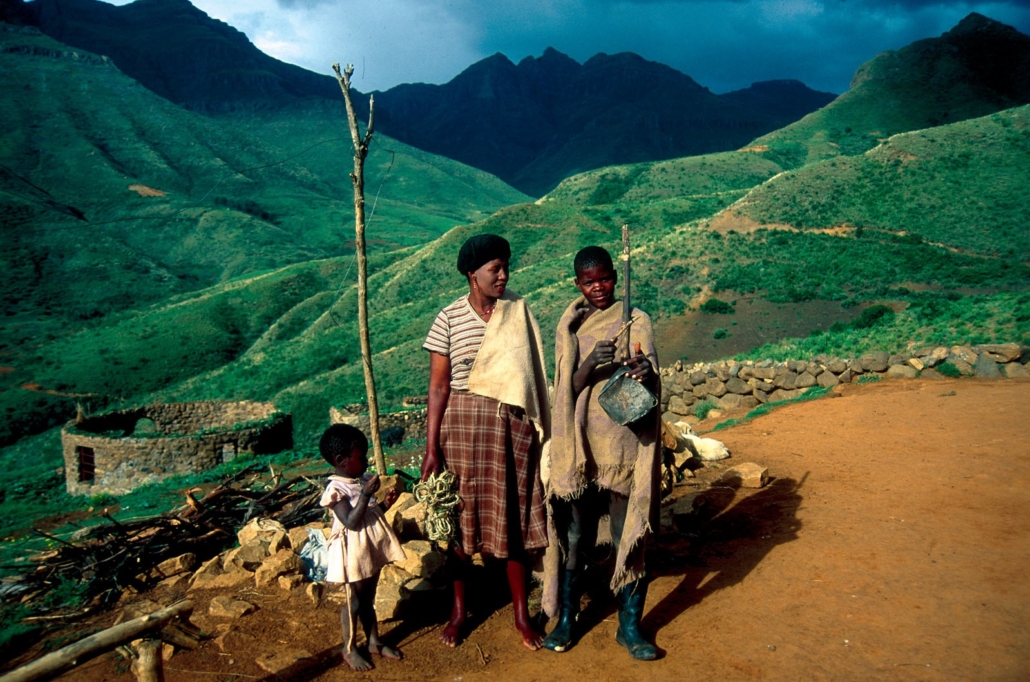10 Facts About Life Expectancy in Lesotho

For those living in the landlocked country of Lesotho, life is far shorter than it is in most of the world. Here are 10 facts about life expectancy in Lesotho that help reveal the reasons for its low life expectancy, as well as what the country has done and needs to do to improve the lives of those in Lesotho.
10 Facts About Life Expectancy in Lesotho
- HIV/AIDS: By far the most important of the 10 facts about life expectancy in Lesotho is that it has the second-highest rate of HIV/AIDS in the world. Health services are difficult to access and poor quality once received, contributing to an increase in the disease. Sentebale, a nonprofit created by Prince Harry, works in Lesotho to provide holistic care for children with HIV and those who have been orphaned as a result.
- Unemployment: Landlocked in Southern Africa, Lesotho has always depended on neighbors for employment. A majority of the working population traveled to South African mines for work, but recent retrenchment has left 24 to 28 percent of people jobless and without income. There have been few domestic opportunities to offset this deficit and improvement in Lesotho’s private sector will be crucial to creating much needed local jobs.
- Low Agricultural Output: Only a small portion of Lesotho’s land is arable enough for steady crop growth. This combined with recent droughts has created intense food scarcity. Some progress is happening as the Elizabeth Glaser Pediatric Aids Foundation has created several Nutrition Corners that help parents find nutritious food for their children’s development, despite limited quantities. The World Food Programme has also planned to distribute food to 103,000 beneficiaries and additional food to nearly 5,000 children by 2024. This should greatly improve life expectancy by providing for the most basic of needs.
- Natural Disasters: The effects of climate change are evident in the 10 facts about life expectancy in Lesotho as the country continues to experience floods, droughts and other intense weather. This jeopardizes Lesotho’s material security, further disrupting the Basotho people’s lives. In response, the United Nations Development Programme has designed several projects to restore degraded landscapes and enhance climate resilience.
- Gender Roles: The HIV/AIDS crisis disproportionately affects women in Lesotho because they often must take in sick relatives or community members on top of performing existing domestic responsibilities. This amount of pressure forces women to pursue risky work such as prostitution or human trafficking. These jobs often damage women’s wellbeing and make it hard for them to live long and healthy lives.
- Few Social Services: One of the most interesting 10 facts about life expectancy in Lesotho is that Lesotho has a relatively large population of elderly citizens despite the HIV/AIDS crisis. The country created its Old Age Pension to provide each citizen over 70 years old with roughly $40 per month. While the social service has had a tremendous impact by making elderly people stable caregivers for their families, including orphaned grandchildren, it is one of the only social services in Lesotho. More programs of this caliber would drastically improve the total health of the population and thus increase Lesotho’s life expectancy as well.
- Improving Education: Education has been a consistent priority for Lesotho, and one that has yielded substantial results. After implementing free primary education, enrollment among children increased from 65 percent to 85 percent in three years. The next goal for Lesotho is to decrease the price of secondary school, as many children cannot currently afford to enroll. The best chance for the Basotho people to raise their life expectancy is to become educated, empowered and informed people.
- Water and Sanitation: Several people in Lesotho (18.2 percent) do not have access to dependably clean water despite several dams present. The water is instead transported to South Africa for profit which leaves local people thirsty. Organizations such as The Water Project are building wells, water catchments and other water solutions for the people of Lesotho.
- Few Accessible Doctors: Lesotho has one doctor per 20,000 people, compared to the one per 400 in the United States. This makes health care inaccessible and costly for most of Lesotho. Lesotho recently added a residency program in family medicine, which will hopefully increase the retention rate of doctors and create a reasonable ratio of doctors to patients.
- Infant, Child and Mother Mortality Rates: An important cause of the reduced life expectancy in Lesotho is an infant mortality rate of 44.6 deaths per 1,000 births and a maternal mortality rate of 487 deaths per 100,000 births. This is largely due to preterm birth complications that come from the frequently poor living conditions of mothers. Both infant and maternal health outcomes are looking much better after Lesotho’s hospitals introduced free deliveries, providing a safe place for mothers to deliver cost-free.
Lesotho is attempting to make the lives of the Basotho people better. Free primary education, enhanced feeding programs and efforts at improving the health sector bring new hope and promise for the country. Though Lesotho needs to do more to fully help its people, its people’s lives are slowly growing longer and their quality of life should continuously improve.
– Hannah Stewart
Photo: Flickr
